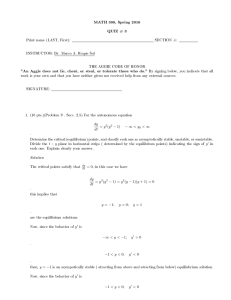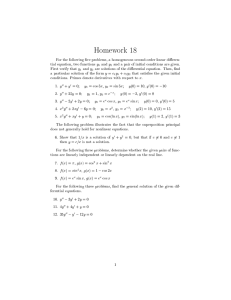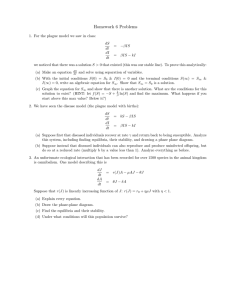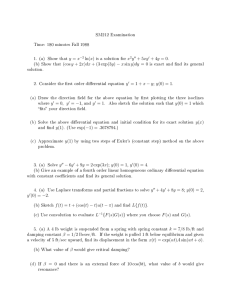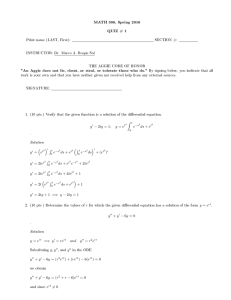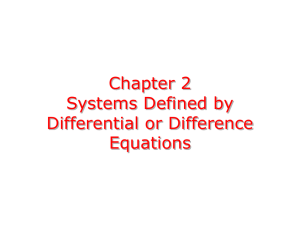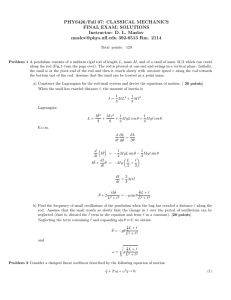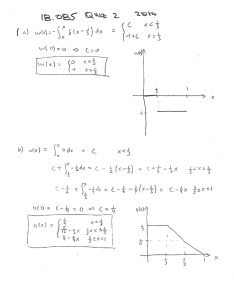EXAM II – MATH 3400, SPRING 2016 STUDENT NAME: STUDENT ID
advertisement
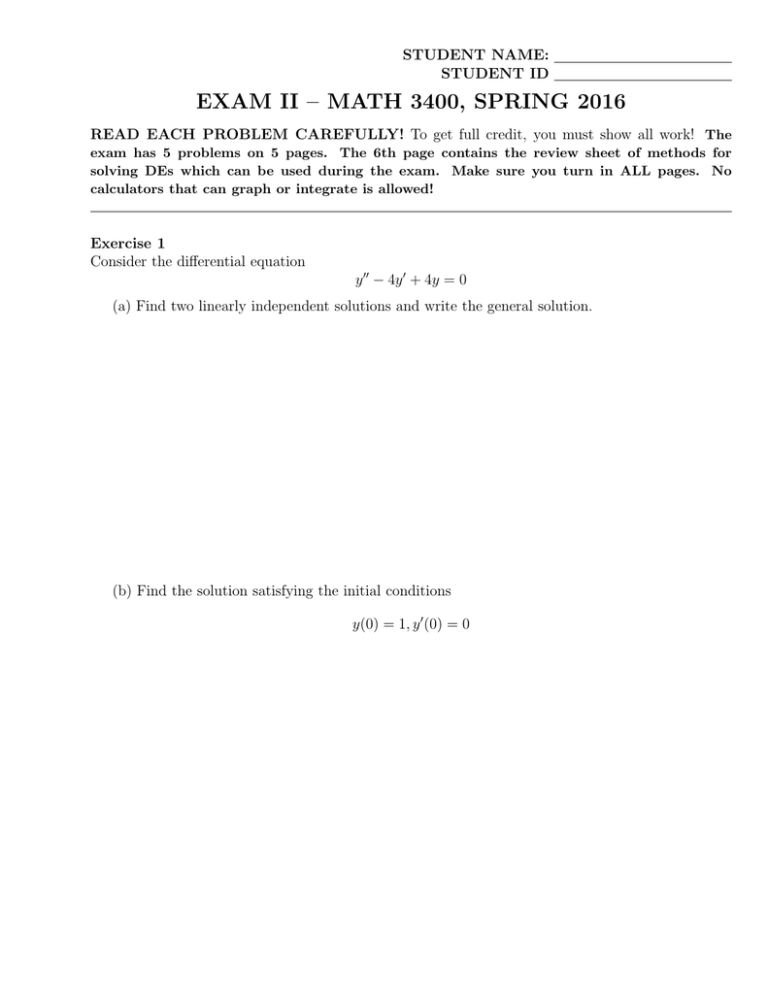
STUDENT NAME: STUDENT ID EXAM II – MATH 3400, SPRING 2016 READ EACH PROBLEM CAREFULLY! To get full credit, you must show all work! The exam has 5 problems on 5 pages. The 6th page contains the review sheet of methods for solving DEs which can be used during the exam. Make sure you turn in ALL pages. No calculators that can graph or integrate is allowed! Exercise 1 Consider the di↵erential equation y 00 4y 0 + 4y = 0 (a) Find two linearly independent solutions and write the general solution. (b) Find the solution satisfying the initial conditions y(0) = 1, y 0 (0) = 0 Exercise 2 Use the method of reduction of order to find a second solution y2 (t) for (x 1)y 00 xy 0 + y = 0 given that y1 (x) = x is one solution. Write down the general solution of the di↵erential equation. Exercise 3 Given the non-homogeneous equation y 00 + 3y 0 + 2y = e x (a) Find the general solution y(x). (b) Solve the initial value problem with initial conditions y(0) = 2, y 0 (0) = 3 Exercise 4 (a) Using the Variation of Parameters method, find a particular solution of the di↵erential equation y 00 + y = 1 + sin x (b) How is this di↵erent from the particular solution found using the method of undetermined coefficients? Explain why in this case both methods are applicable, and describe a situation (right hand side?) when the only applicable method is the first one. Exercise 5 A spring-mass system (m = 2, k = 4) with damping (c = 4) is initially stretched (x(0) = 1) and has zero velocity (x0 (0) = 0). Recall that, given an external forcing f (t), the motion is governed by the di↵erential equation mx00 + cx0 + kx = f (t) (a) Is it an overdamped, underdamped or critically damped system? Determine its motion x = x(t) in absence of any external forcing (f (t) = 0). (b) Determine its motion x = x(t) in presence of the external forcing f (t) = 2 sin(t) (same initial conditions). (c) Is it possible to create resonance in this system? Why or why not? Explain. METHODS FOR SOLVING 2nd order DIFFERENTIAL EQUATIONS Math 3400 - Spring 2016 Instructor: Radu C. Cascaval 2nd order linear with constant coefficients, homogeneous of the form ay 00 +by 0 +cy = 0. Characteristic equation ar2 + br + c = 0 has the roots r1 , r2 . The general solution is of the form • y(x) = c1 er1 x + c2 er2 x , in the case of two distinct real roots, r1 6= r2 ; • y(x) = c1 erx + c2 xerx , in the case of one repeated root r1 = r2 = r; • y(x) = c1 e↵x cos x + c2 e↵x sin x, in the case of two complex (conjugate) roots r1 = ↵ + i , r2 = ↵ i . Reduction of order: If the equation y 00 + p(x)y 0 + q(x)y = 0 has one known solution y1 (x), then a second, linearly independent, solution can be found in the form y2 (x) = v(x)y1 (x). One needs to solve only a 1st order equation in z(x) = v 0 (x). Method of undetermined coefficients (or judicious guessing) The nonhomogeneous 2nd order equation ay 00 + by 0 + cy = f (x) with f (x) of a special form (for example xn , erx , sin kx, cos kx or any combination of them, including sums and products) has a particular solution given by this table Variation of parameters: If y1 (x) and y2 (x) form a fundamental set of solutions for the 2nd order homogeneous equation y 00 + p(x)y 0 + q(x)y = 0, then a particular solution of the nonhomogeneous equation y 00 + p(x)y 0 + q(x)y = f (x) is found in the form y(x) = v1 (x)y1 (x) + v2 (x)y2 (x), where v10 (x) = y2 (x)f (x) W (y1 ,y2 )(x) and v20 (x) = y1 (x)f (x) W (y1 ,y2 )(x) 1



